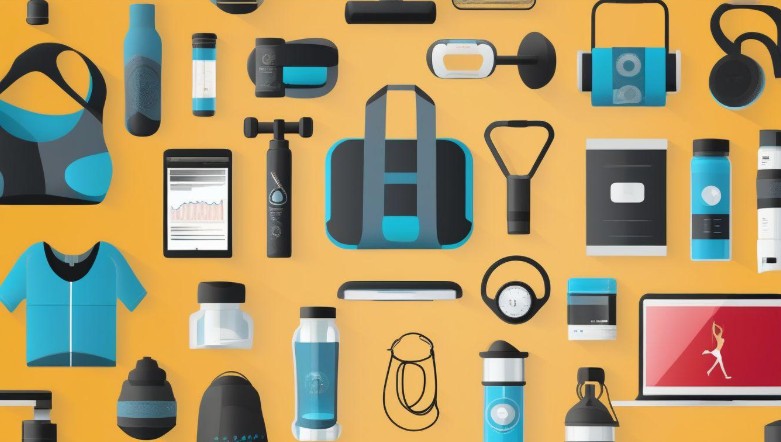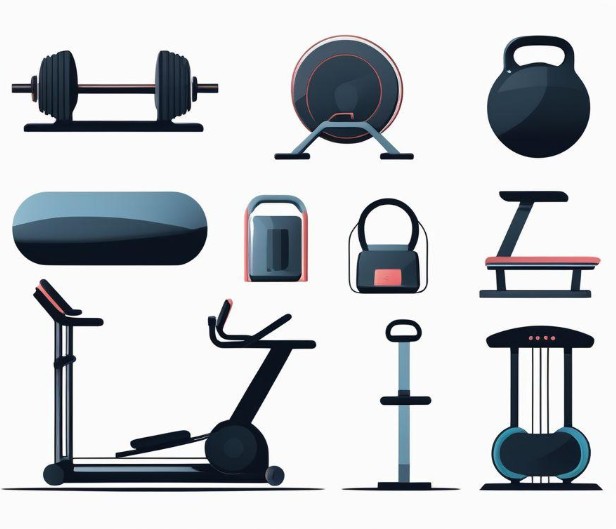5 Technology Trends Your Gym Should Have
5 Technology Trends Your Gym Should Have
Member expectations have changed fast.
People now compare your gym experience to the apps and services they use every day.
They want quick entry, personalized coaching, flexible memberships, and recovery tools that make training sustainable. The good news is that the right technology does not just impress members. It also reduces front-desk load, increases secondary revenue, and helps your staff focus on high-value interactions.
Below are five technology trends every gym should consider, plus practical steps to implement each one without blowing the budget.
1) Mobile-first memberships and self-service
A modern gym app or mobile web portal should centralize bookings, payments, messages, digital waivers, class credits, guest passes, and announcements. Members expect to manage everything from their phones. There’s a website builder platform from Canva or WordPress that can help you make websites if you think creating a mobile is expensive at the moment. Streamlined self-service reduces queues, no-shows, and manual work for your team while enabling targeted upsells such as recovery add-ons or PT intro packs.
Key features to insist on
- Class and lane bookings with waitlists and auto-promotion
- Wallet for credits, memberships, and gift cards
- Push notifications for schedule changes and promotions
- In-app trainer chat and session notes
- Digital waivers and ID verification for guests
- Family and corporate account linking
Implementation tips
- Start with a clear member-journey map from discovery to first workout. Make every step bookable and payable inside the app.
- Integrate your payment processor so refunds, proration, and freezes work without staff intervention.
- Use gentle nudges such as “You have 1 credit expiring soon” rather than generic blasts.
What to measure
- App MAU/DAU and push open rate
- Class fill rate and no-show rate
- Self-service share of bookings and payments
- Front-desk ticket volume and average handle time
2) Smart access control and frictionless entry
Secure, contactless entry that ties identity to membership status speeds up check-ins, reduces tailgating, and gives you accurate occupancy data for safety and staffing. For extended hours or boutique spaces, smart access makes unattended operation viable, including secure 24/7 access for customers/members with time- and zone-based rules. Add turnstiles at the main doors and digital locks for studios and staff-only zones. Consider implementing Coram’s Access Control System to time-bound guest passes and door/studio controls across locations; paired with real-time membership validation and occupancy dashboards, it cuts tailgating and speeds up peak-hour check-ins.
Key features to insist on
- Real-time membership validation and guest pass rules
- Time-bound access for classes and small-group training
- Audit trails with entry timestamps and occupancy dashboards
- Integration with lockers, parking gates, and bike rooms
Implementation tips
- Pilot at one entrance before rolling out site-wide. Train staff to troubleshoot common issues like expired passes and phone battery failures.
- Pair entry analytics with staffing rosters to match coverage to traffic.
- Communicate clear privacy and data-handling policies so members know what you collect and why.
What to measure
- Average entry time and peak-hour throughput
- Tailgating incidents and invalid entry attempts
- Occupancy versus staffing and HVAC schedules
- Member satisfaction at check-in
3) Connected strength and AI form coaching
Sensor-enabled equipment and computer vision can track reps, tempo, range of motion, and rest, then deliver instant form cues and progressive overload plans. Trainers get dashboards for adherence and fatigue markers. Automated feedback improves safety and consistency and makes progress visible, which lifts motivation and retention.
Key features to insist on
- Set and rep detection with velocity or time-under-tension
- Movement quality scoring and concise form prompts
- Adaptive progression that adjusts loads when members plateau
- Exercise demo library aligned to your brand standards
- Coach view for assigning programs and monitoring compliance
Implementation tips
- Start with two or three high-traffic zones such as squat racks, cable stations, and a free-weight corner with a smart camera.
- Build a “first 30 days” pathway: technique check, starter program, and two automated check-ins.
- Protect the vibe by keeping prompts discreet and letting trainers toggle between automated and human coaching.
What to measure
- Program adherence and sessions completed per member
- Reduction in basic form faults over time
- PT conversion and rebooking rates
- Injury reports and incident trends

4) Wearable and equipment data integration
Unify data from watches and rings with cardio consoles and strength tracking so progress appears in one simple dashboard. Trainers can see sleep, heart rate trends, and training load to tailor sessions. Personalization increases perceived value and supports premium services.
Key features to insist on
- Support for Apple Health, Google Fit, Garmin, and Whoop
- Automatic syncing from bikes, rowers, and treadmills
- Simple red–yellow–green readiness indicators for coaches
- Consent controls and data minimization by default
Implementation tips
- Offer opt-in tiers. Casual users see summaries; PT clients can share deeper data for customized programming.
- Use readiness to drive smart scheduling: suggest lower-intensity classes on red days and skill sessions on green days.
- Train staff to explain privacy in plain language to build trust.
What to measure
- Share of members who connect a wearable
- PT client outcomes such as strength gains or VO2 progress
- Class recommendation acceptance rate
- Member retention among integrated versus non-integrated users
5) Recovery tech zones that actually get used
Create a dedicated space with compression boots, percussive therapy, red light panels, mobility stations, and hot–cold options. Time-capped sessions are bookable in the app, often as a paid add-on. Recovery keeps people training consistently and adds revenue without heavy staff workload.
Key features to insist on
- Self-service booking and access control to avoid crowding
- Clear protocols and time caps per modality
- Bundled upsells such as “Train + Recover” or “PT + 10-minute boots”
- Education cards or mini videos about benefits and best practices
Implementation tips
- Start with two or three modalities and expand based on usage data.
- Place the zone near the exit to encourage post-workout visits.
- Rotate limited-time recovery “stacks” so members try new options.
What to measure
- Recovery zone utilization by hour and day
- Attach rate to classes and PT
- Average revenue per member and per visit
- Member feedback on soreness and session quality

Enablers that make everything work better
Hybrid content: Build a short library of on-demand technique clips and mobility flows for members who miss class. Keep videos under three minutes and tag them by goal and body part.
Flexible payments: Support class packs, credits, student or family plans, and pause options. Flexibility reduces churn and improves cash flow.
Data privacy and consent: Publish a simple, readable privacy summary. Let members choose what they share and allow easy revocation. Trust is a feature.
Sustainability and cost control: Pair occupancy data with HVAC and lighting automations. Energy-efficient cardio equipment and scheduled shutdowns can meaningfully reduce utilities.
A simple rollout plan
1) Audit
Map the member journey from discovery to first renewal. Identify friction points like check-in queues, late cancellations, or crowded recovery areas.
2) Pick one pilot per quarter
Quarter 1: Mobile self-service
Quarter 2: Smart access and occupancy analytics
Quarter 3: AI form coaching in one strength zone
Quarter 4: Recovery zone with self-booking
3) Choose vendors with open APIs
Your app, access control, AI coaching, and billing should exchange data easily. Ask vendors to demonstrate a real integration rather than promising one.

4) Train and communicate
Create simple playbooks and short screen-recorded tutorials for staff. For members, announce changes early, share the why, and provide a two-week grace period for learning.
5) Launch, measure, iterate
Decide success criteria in advance, review weekly, and make small adjustments rather than big resets.
Common pitfalls to avoid
- Buying gadgets without a use case
- Forgetting staff workflows
- Weak privacy hygiene
- No sunset plan for pilots
- Over-personalization that spams members
Sample budget planning
- Mobile app and member portal: platform fee plus a small per-member fee
- Smart access control: hardware per door or turnstile, plus software license
- AI strength coaching cameras or sensors: per station, with coach dashboard seats
- Wearable integrations: often included in app platforms, sometimes as an add-on
- Recovery zone: one-time equipment cost, then consumables and maintenance
Frame costs against outcomes. If frictionless entry shaves 10 seconds off each check-in during peak hours, that can completely change the front-desk experience. If AI form coaching improves adherence and PT conversion, it pays for itself quickly.
Metrics that signal you are winning
- Check-in speed and peak-hour throughput
- App adoption, bookings per active user, and no-show rate
- PT attachment, rebooking, and average revenue per member
- Recovery utilization and add-on revenue
- Member satisfaction, reviews, and referral rate
- Staff workload and time spent on manual tasks
Final word on fitness tech
Technology is not about flashy gear. It is about making the member journey simpler, safer, and more personal while helping your team do their best work.
Start with one or two high-impact changes, measure results, and grow from there.
If you commit to mobile-first self-service, frictionless entry, AI-powered coaching, integrated data, and a useful recovery zone, your club will feel modern, efficient, and member-centric.

